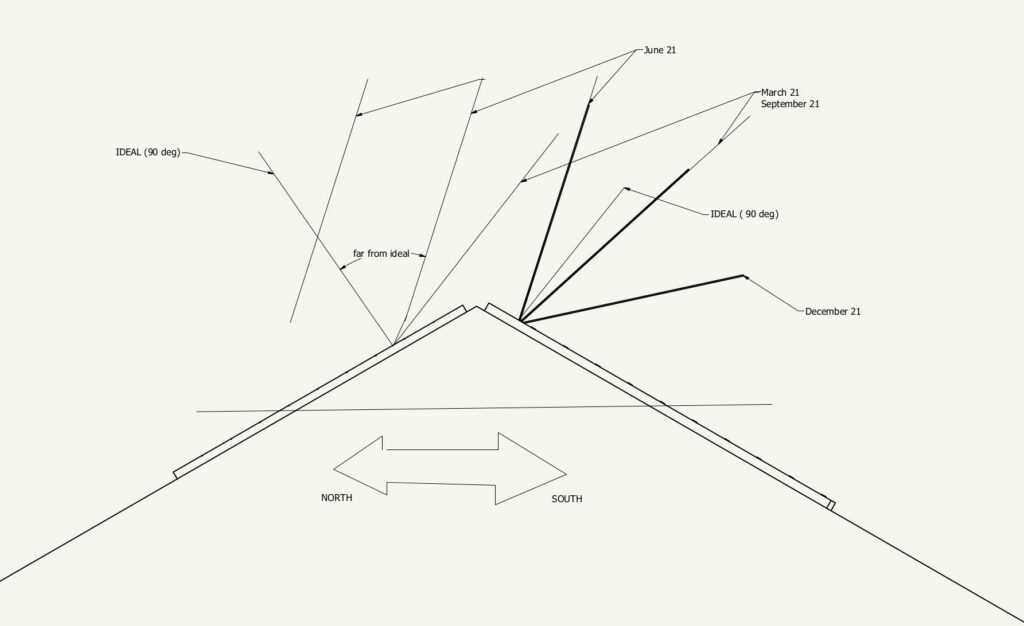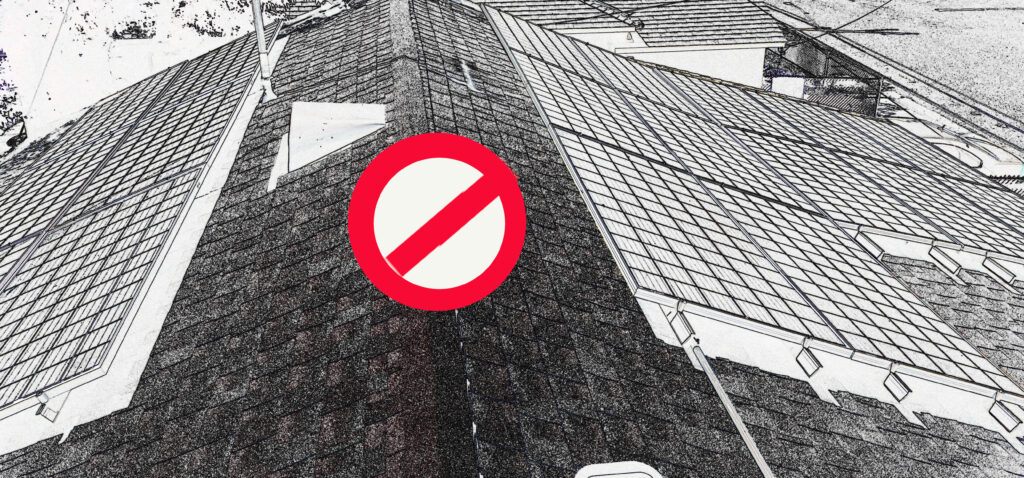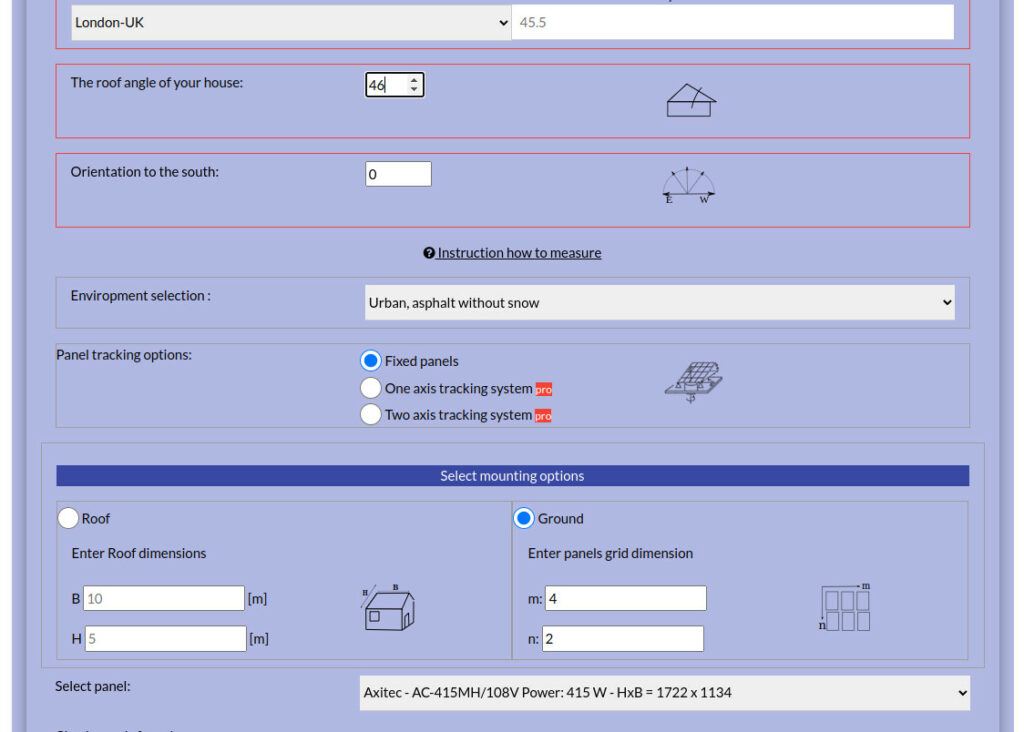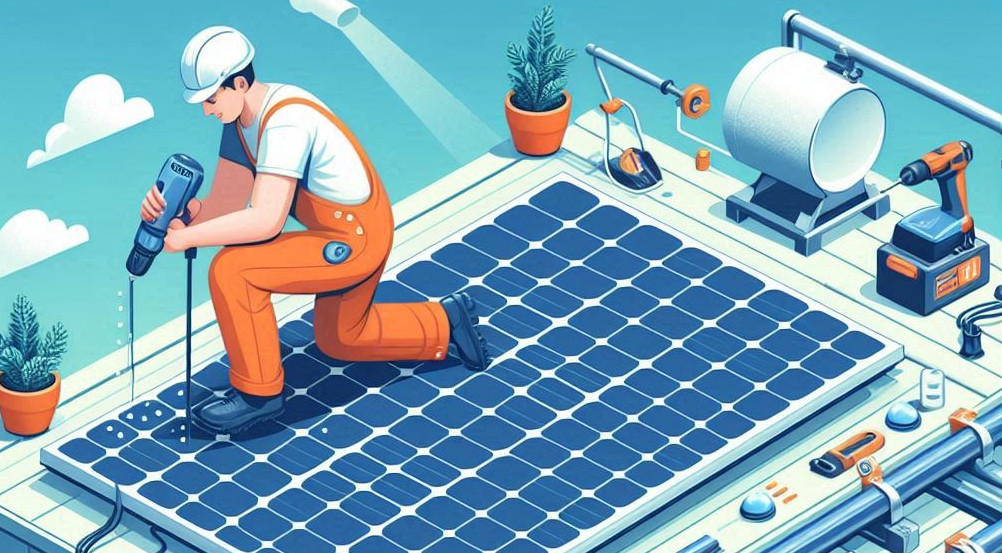On the market, you can find ready-made solar kits (DIY Do It Yourself), where you have everything and only need to install them either on the roofs of houses or in the yard as mini solar power plants.
Is everything really that simple?
This article is dedicated to the calculation of solar kit what we could get.
DIY solar -calculation first
I always put calculation first, even if I am going to the supermarket.
Before we start with the purchase of a solar kit, it is necessary to make some calculations. Each kit has a
declared strength. How much electricity you will actually get and how long the investment will pay off depends on the location and installation method. With the small help of the SPAC application, you can calculate the actual profit from the solar kit. The solar panels have to be facing south, south-east, or south-west. If the solar panel is facing east, it will work well from morning until noon. If is
facing west, it will work well from noon to the evening. If is facing north, it will not work well at all because it will collect only the diffuse and reflected components, which make up about 10% of
the solar radiation, and the direct component will only fall into the solar floor at an unfavorable angle.

Do not mount solar panels facing north on the the northern hemisphere place (America, Asia, Europe, and North America). If you live in the southern hemisphere (South America, Australia, Africa, and Asia)
south of the equator), then you should, because the situation is inverse.
When all the above factors are added together, we get the concept of the incident angle, or the angle of incidence of light. That angle must be normal to the solar panel or as close to it as possible.
Everything else is less favorable or unfavorable.
Do not let solar installers fool you
In the case of bad mounting positions, you can easily see if the panel has been installed improperly if they are on both sides of the roof. In that case, at least one side faces north, northwest, or northeast. That side won’t work well. The incident angle is bad.
The next thing I noticed were flat roof installations or vertical installations.
Those settings are not good because of the bad incident angle.
The The SPAC application only takes well-pitched roofs into account. As I said before, it is very important:
Orientation : to the south as much as possible.
It is obvious that the panels will be mounted, i.e., fixed, on the roof of the house.
And finally, an important factor is the location. Same panel configuration will not give the same yield in sunny southern areas compared to cloudy and foggy areas, for example, a city in the desert
of New Mexico compared to a city with a temperate continental climate. Cities in the south usually have a longer and more sunny day, but that also depends on climatic factors, and for us, the most important factor is cloudiness.
This issue is covered in detail here >>>.

Using SPAC application for daily production from solar
An example of a solar cost-effectiveness calculation Let’s take the example of a solar kit from a prominent online solar equipment store. It does not mater if is off grid or on grid.
The seller offers a set of equipment for installing solar panels on the roof. This configuration includes 8 solar panels with a power of 415 watts.
The seller also claims that 13 kWh per day can be obtained in 4 hours of sunshine. That is their calculation taking in account averages.
By simple multiplication : 415 W * 8 panels * 4 houses = 13,280 W.
This further means that the solar panels will work in STC for those 4 hours, which means maximum illumination! It’s simply does not sound accurate, unless it’s built into a two-axis tracking system., but that’s unlikely for common users.
Seller must have some kind of calculation to offer – it is perfectly legal. But we want clear situation about investment and production.
So, In the next example, we will apply the same configuration to two cities in Europe (London and Rome) and one in North Africa (Tunisia).
We will use SPAC version for Europe for Rome and London , and version for North Africa for Tunis (Tunisia).


London, the capital of the UK, is taken as an unfavorable example due to its cloudiness.
Rome, the capital of Italy, is selected as a favorable example due to the Mediterranean climate and fewer sunny days.
Tunis, the capital of Tunisia, is taken as an even better example than Rome due to its
geographical position and even fewer cloudy days during the year.
A small analysis of the calculated results
London will not reach the declared production. At the maximum it will reach is 9.53 kWh per day in August. Rome will reach the approximate declared production in the period from May to September, and Tunisia in the period from April to October.

At the winter months, of which December is the most unfavorable, London will have only 1.88 kWh/daz far from declared daily profits. In Tunis that value will be 7.19 kWh/day. From the attached tables that we get as a result of the calculation on the other side, we can see that London is in the most unfavorable situation. Thanks to the heavy cloud cover, the gains from solar are almost twice as low as our seller claims. Rome is in a better position thanks to the Mediterranean climate (less cloudiness, longer days compared to London), and the gains are almost similar to what the seller declares. The best situation is still in Tunisia, in the north of Africa. Their profits in some months are even better than the seller claims.
Conclussion
To be honest, it is not advisable to install solar panels on the roofs of your houses yourself unless you are both an experienced construction worker and an experienced electrician at
the same time. The structure of the roof on which the panels are mounted is very important. The roof must withstand the weight of the panels and hold them in place in the event of gale-force winds. Therefore, the beams must not be rotten or worn out. The practice is that the panel supports are attached to the existing main beams of the roofs of the houses. Screw connections suffer special loads during strong wind or other weather disasters.


